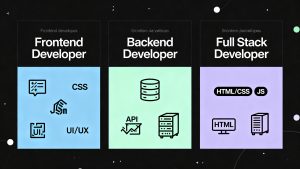the debate over “platform engineering versus DevOps” misses a critical point. While developer portals and productivity tools can streamline workflows, they alone cannot solve challenges rooted in company culture, communication breakdowns, or a lack of product-thinking. Organizations must rethink their approach to internal platforms, focusing on product-led solutions that genuinely enhance developer experiences rather than simply mandating tool adoption.
The Essentials of Platform Engineering
Platform engineering is often described as building integrated toolchains and workflows that deliver self-service capabilities for software teams. However, true platform engineering goes beyond tools—it is the practice of delivering developer-centric products that simplify the entire lifecycle of application development and operations in cloud-native environments.
- Internal platforms must act as products, catering directly to developers as real customers.
- Success is measured by improved developer productivity, not just the existence of tools.
- Teams should prioritize integrated experiences that reduce friction and enable end users to deliver value.
DevOps Is Not Obsolete
Contrary to popular claims, DevOps remains a vital discipline focused on uniting people, processes, and products for continuous delivery. Platform engineering is best viewed as an extension of DevOps, emphasizing developer enablement rather than replacing foundational practices.
- Function matters more than labels. Whether called “platform engineering,” “developer experience,” or “engineering enablement,” the real goal is to help teams ship software with less friction.
- The conversation should center around improving developer experiences and product outcomes, not just team naming conventions.
Product Thinking in Internal Platforms
Treating internal platforms as products is fundamental for long-term success. When platform teams neglect product management, developer feedback, or internal advocacy, the result is fragmented adoption and missed opportunities.
- Internal platforms need product ownership, telemetry, and feedback loops—just like any customer-facing product.
- Developer satisfaction is the best indicator of platform value, measurable through both quantitative metrics and qualitative insights.
- Teams that combine technical improvements with transparent communication and internal “marketing” see stronger engagement and better outcomes.
Enablement, Not Enforcement
Platform teams should empower developers with “paved paths” that are easy and safe to follow, while still allowing room for innovation beyond the standard. Enforcement by mandate breeds resentment, while genuine product value drives voluntary adoption.
- Standardization reduces support overhead, but should never limit innovation or force unwanted change.
- Usage mandates create shadow tooling and resistance; focus instead on impact, improved quality, and developer happiness.
Beyond Vanity Metrics: Measuring True Impact
Relying solely on usage metrics can be deceptive. Platform adoption must be linked to meaningful business outcomes, such as feature delivery speed, user satisfaction, and overall product quality.
- Measure lead times, reliability, and business impact to gauge platform effectiveness.
- Continually solicit feedback to ensure internal platforms stay relevant and evolve with developer needs.
The Limits of Developer Portals
Developer portals can simplify onboarding and resource access, but a portal is just a tool—not a comprehensive solution. Real success depends on healthy culture, effective communication, and product-driven platform evolution.
- High-quality platforms are sustained by continuous improvement, not one-off deployments.
- User adoption and long-term usefulness are the true tests of platform quality—not just initial deployment success.
Conclusion
Transformative platform engineering in 2025 requires product thinking, real developer engagement, and continuous improvement. Organizations should elevate their internal platforms beyond toolchains, measuring impact in developer happiness, productivity, and sustained value—ensuring platforms remain relevant and genuinely empowering for years to come.
Read more such articles from our Newsletter here.



